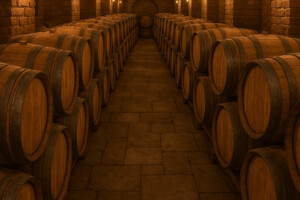
In a panorama of Italian wine where opinions are often divided, almost about everything, there are very few prominent figures whose prestige and authority, supported by the facts, make everyone, or at least most of all, agree. Among these, ahead of the others, there are two characters, above all, recognized pioneers and forerunners for Italian wine on the world markets, when it did not enjoy yet the prestige of today. One is Piero Antinori, an expression of the nobility of Italian wine, heir to a family history which, in world of wine, has begun in 1385 in Florence - strongly anchored to Tuscany but also a protagonist in many other territories of Italy and beyond - but which under his decisive impulse has resulted in one of the most important Italian wine companies ever (today led by the daughters Albiera, Allegra and Alessia, and by the CEO Renzo Cotarella). The other is Angelo Gaja, witness of that modern bourgeoisie that made the Langhe area great, defender and symbol of wine artisans, who created the Barbaresco winery today led by his children Gaia, Rossana and Giovanni, one of the qualitative references of the wine world. Among the many testimonies and stories about their role, one is the “Top 100” of the US magazine “Wine Spectator”, which has always been one of the most popular and influential. In 1988, the year of the first edition, Gaja was the most represented Italian producer, with four labels, of which the best rated of Italy, Barbaresco Sorì Tildìn 1985, at n. 5, accompanied by Barbaresco, Barbaresco Costa Russi and Barbaresco Sorì San Lorenzo, “children” of the same vintage. Among the other Italian producers, the only one with more than one award-winning wine (two, to be precise, 1985 Chianti Classico Peppòli and 1985 Santa Cristina), was Antinori. Again, Gaja, in the 1993 ranking, was the first to bring an Italian wine to the podium, at no. 2, with Barolo Sperss 1988, while Antinori, in 2000, was the first Italian producer to conquer the n. 1 absolute, with his Solaia 1997. Curious facts, which give a clue, why Piero Antinori and Angelo Gaja (among the very few Italian producers to end up on the cover of “Wine Spectator”, ed), have been, in recent days, among the “Wine Stars” (including Sting and Trudy Stiler, producers in Tuscany with the Palagio, directed by Riccardo Cotarella, ed) the protagonists of the “New York Wine Experience “of the US magazine, in what is considered the most important event in wine promotion in America (the main market for Italy, ed). Where Piero Antinori, tasting Solaia 1997, reports to “Wine Spectator”, underlining what, in the very long history of Italian wine his family has gone through, “the last half century has been the most exciting”, because it was the one in which the focus has shifted from quantity to quality. “I call it the Renaissance, but it's actually a revolution, and I consider myself lucky, because I happened to be in the business during this very exciting period of change,” said Piero Antinori. Who is recalling the birth of Solaia in 1978, almost by chance, defined it as a wine that “has a slightly more international style than other Tuscan wines, but always maintaining the Tuscan heritage. Big but simple at the same time; able to go straight to the heart and give great emotions”.
“I am 81 years old, and what I tell to my children is to be able to think differently ... and to have passion for what they do”, said, instead, connected from Barbaresco in Langa, Angelo Gaja, while Gaia Gaja has reminded how “the United States was the first and the most important country in the world, to recognize the dignity of Italian wines and to encourage artisanal producers to do better”. Reflections and experiences of two characters, from two families, ones of those to whom Italian wine - which when Antinori and Gaja began to travel the world to make it known and sold was considered “cheap & cheerful”, that is “cheap and fun”, as Angelo Gaja often tells, and today, thanks to the work of many, it is the leading sector of the made in Italy agri-food sector and one of the most capable of generating value and wealth - really owes a lot.
Copyright © 2000/2025
Contatti: info@winenews.it
Seguici anche su Twitter: @WineNewsIt
Seguici anche su Facebook: @winenewsit
Questo articolo è tratto dall'archivio di WineNews - Tutti i diritti riservati - Copyright © 2000/2025